This post may contain affiliate links, which means I’ll receive a commission if you purchase through my links, at no extra cost to you. Please read full disclosure here.
There are two number systems in Korean: Sino-Korean and Native Korean.
Native Korean numbers, also known as Pure Korean numbers, are numbers that are indigenous to the Korean language. They are written and read in Korean script, known as Hangul.
Unlike Sino-Korean numbers, which are borrowed from Chinese characters, native Korean numbers are unique to the Korean language.
Native Korean numbers 1-10
The Native Korean number system consists of ten basic numerals, from one (하나, hana) to ten (열, yeol). The following table provides the native Korean numbers in Hangeul along with their Revised Romanization.
| Number | Native Korean | Revised Romanization |
|---|---|---|
| 1 | 하나 | hana |
| 2 | 둘 | dul |
| 3 | 셋 | set |
| 4 | 넷 | net |
| 5 | 다섯 | daseot |
| 6 | 여섯 | yeoseot |
| 7 | 일곱 | ilgop |
| 8 | 여덟 | yeodeol |
| 9 | 아홉 | ahop |
| 10 | 열 | yeol |
When to use Native Korean numbers
Native Korean numbers are used for:
- General counting up to 100
- Counting objects (pens, apples, cups etc.)
- Expressing age (someone’s age or your own)
- Telling time (specifically hour)
- Songs, rhymes, and children’s stories






